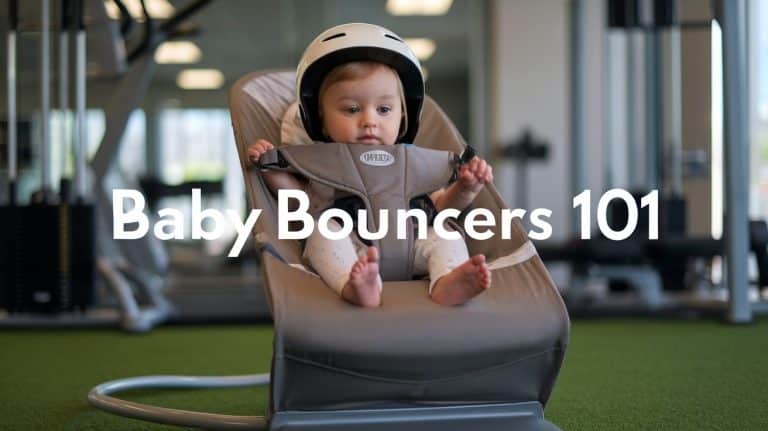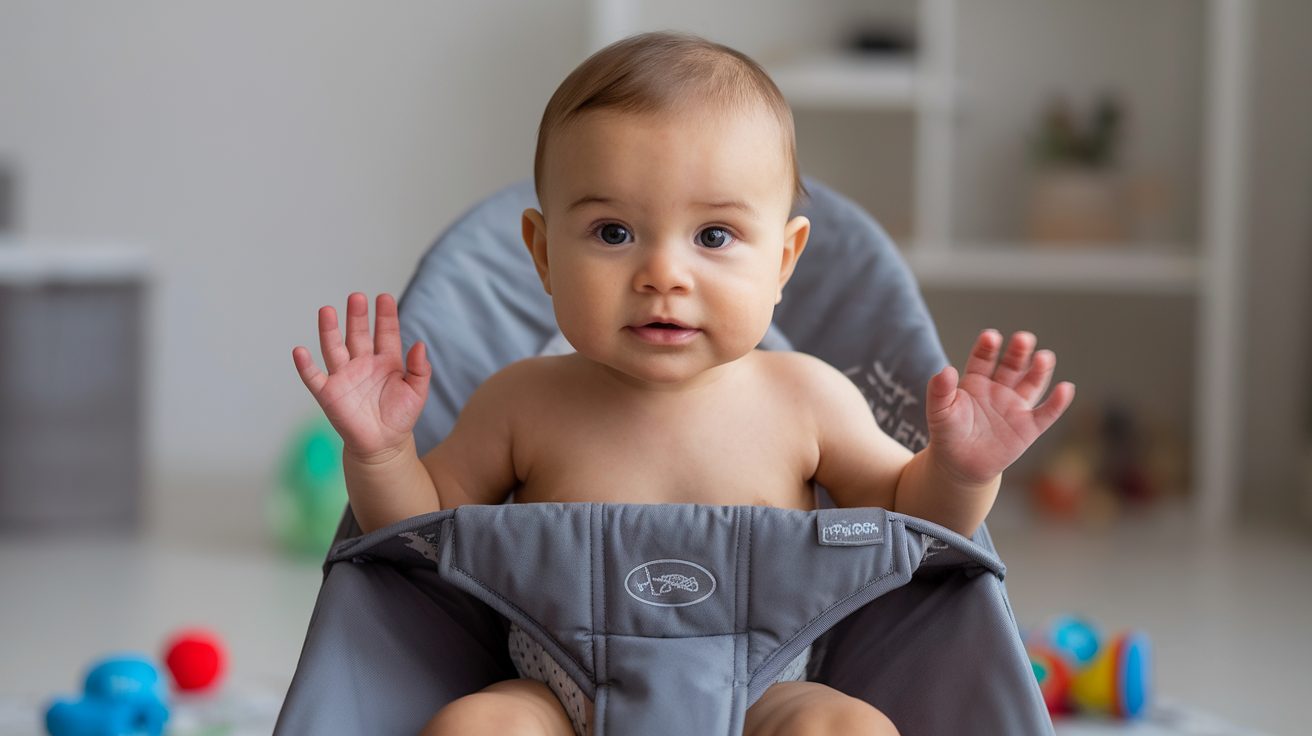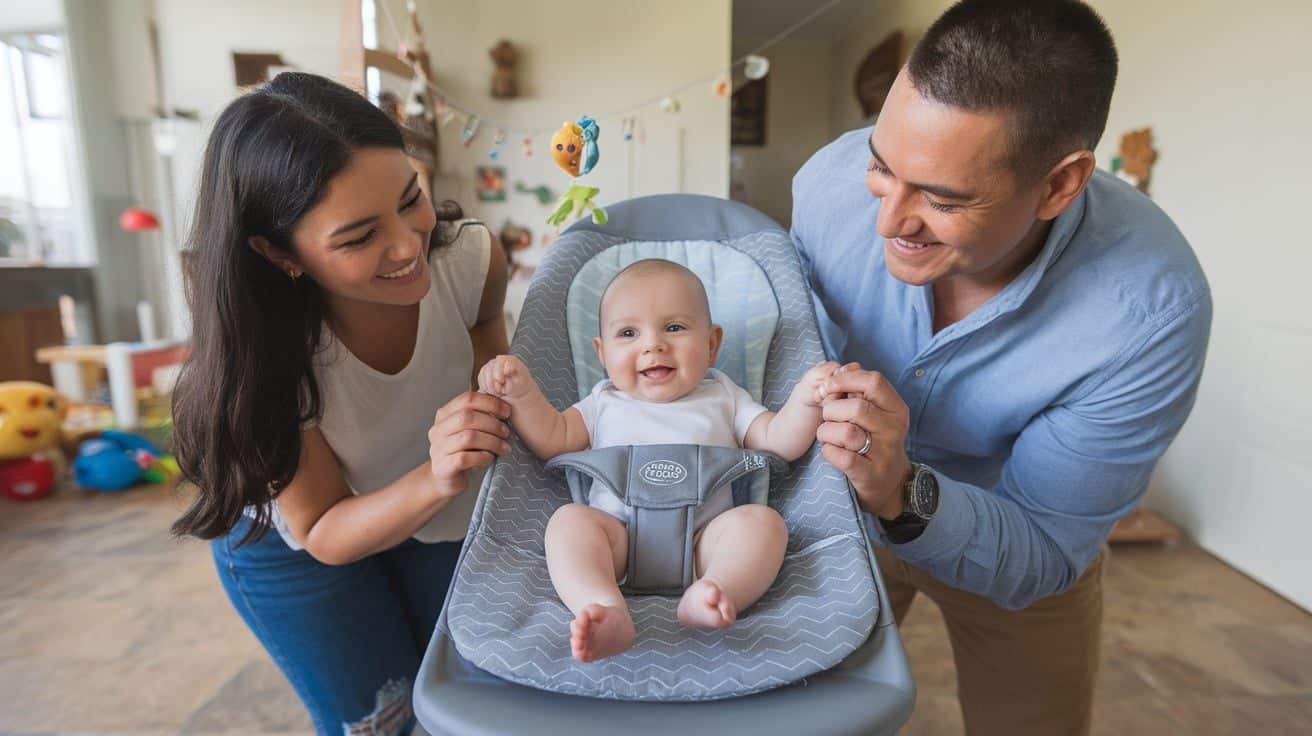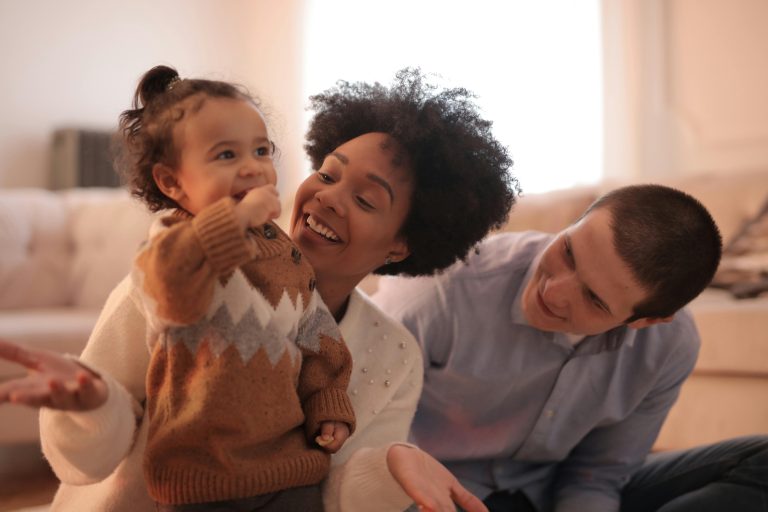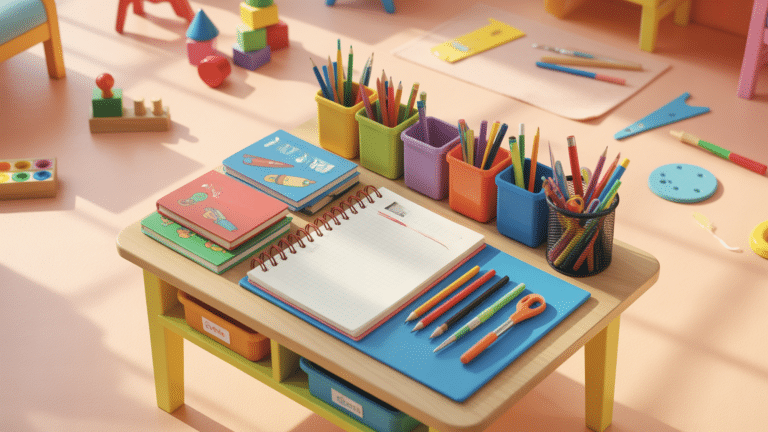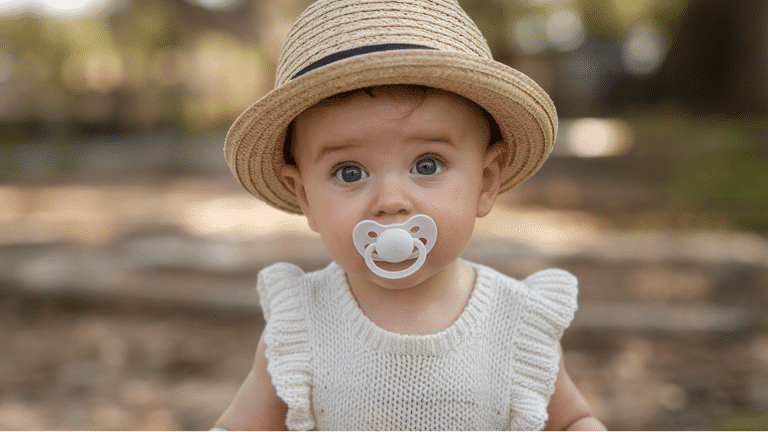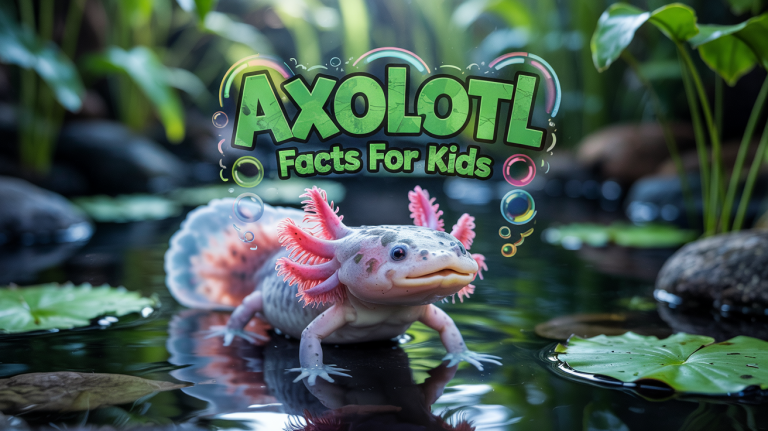As a new parent, finding a safe spot to place your baby while you grab a quick shower or make lunch can feel like solving a puzzle. Baby bouncers often come up as a solution, but you might wonder if they’re really good for your little one.
Think about this: each year, around 2,000 babies get hurt while using bouncers, yet millions of parents consider them essential baby gear.
Some say they’re perfect for entertaining babies, while others worry about development issues.
With such different views floating around, how do you know what’s right for your baby?
I get it – there’s a lot of information out there, and it’s not always easy to know what’s best for your baby. That’s why I’ve put together this simple guide to help you understand the real deal about baby bouncers.
What Is a Baby Bouncer?
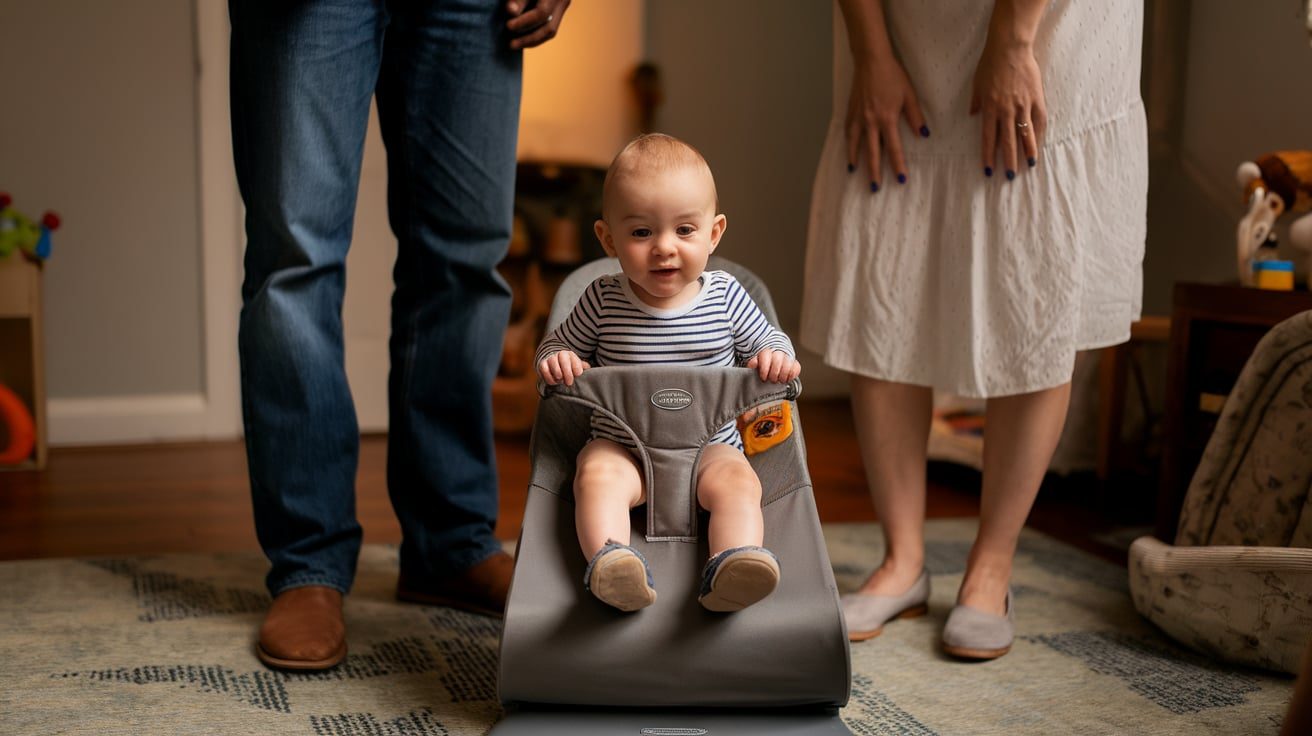
A Baby Bouncer Is a Seat with Springs or Elastic Bands that Move when Your Baby Wiggles or Kicks. Think of It as A Cozy Little Chair that Responds to Your Baby’s Movements.
Most Bouncers Have a Soft, Slightly Reclined Seat, Sturdy Frame, and Safety Straps to Secure Your Little One. Some models include extras like toy bars or soothing Beverages.
Difference Between Bouncers, Rockers, and Swings
| Type | How It Moves | Power Source | Main Feature |
|---|---|---|---|
| Bouncer | Up and Down Motion | Baby’s Movements | Responds to Baby’s Kicks and Wiggles |
| Rocker | Back and Forth | Manual Push or Baby’s Movement | Curved Base for Gentle Swaying |
| Swing | Multiple Patterns | Batteries/Electricity | Automated Movement Patterns |
Why do Parents Use Baby Bouncers
Need to Fix a Quick Meal? Want to Take a Quick Shower? A Bouncer Can Be Your Helping Hand. Many Parents Find that Bouncers Offer a Safe Spot for Their Baby During Those Busy Moments.
Plus, Babies Often Enjoy the Gentle Bouncing Motion, Which Can Keep Them Entertained While Developing Their Sense of Movement and Balance.
Remember – While Bouncers Can Be Helpful, They’re Meant for Short Periods of Use, Typically 15-20 Minutes at A Time, Under Your Watchful Eye.
Are Baby Bouncers Safe?
Medical Experts and Studies Have Highlighted Some Key Points We Should Consider Before Placing Our Little Ones in A Bouncer.
Common Safety Concerns
- Breathing and Sleep Safety: When Babies Sleep in Bouncers, Their Heads Can Tilt Forward in A Way that Might Block Their Airways. Doctors Strongly Say “No” to Letting Babies Sleep in Bouncers. If your Baby Falls Asleep in The Bouncer, Moving Them to Their Crib Immediately Is Best.
- Posture and Development: Your baby’s Body Is Still Developing, and Its Spine Needs Proper Support. The World Health Organization Suggests Keeping Babies in One Position for No More than An Hour.
- Physical Development: Some Parents Worry Too Much Bouncer Time Might Slow Down Their Baby’s Natural Development. Think of Bouncer Time as A Small Part of Your Baby’s Day, Not the Main Event.
- Overstimulation Signs: Bouncers can overwhelm babies, especially with added features like music or toys. Watch for Signs Like Fussing or Crying, Baby is Looking Tired, or Rubbing Their Eyes
Expert Tips for Safe Bouncer Use
- Always Place the Bouncer on A Flat, Stable Surface
- Never Put the Bouncer on High Surfaces Like Tables or Counters
- Use All Safety Straps Correctly
- Stay Within Arm’s Reach of Your Baby
- Keep Bouncer Sessions Short (15-20 Minutes)
- Make Sure Your Baby Has Good Head Control Before Using a Bouncer
How to Choose the Right Bouncer for Your Baby
Shopping for A Baby Bouncer Shouldn’t Feel Like Rocket Science. Here’s What You Need to Know to Pick One That’s Both Safe and Comfy for Your Little One.
Features that Matter: A Good Bouncer Should Support Your Baby Like a Gentle Hug.
- A Wide, Sturdy Base that Won’t Tip Over
- A Seat that Keeps Your Baby’s Hips and Back in A Natural Position
- Soft, Breathable Fabric That’s Easy to Clean
Head and Back Support: Your Baby’s Neck Muscles Are Still Developing, so Proper Support Is Key.
- A Well-Padded Headrest that Cradles Your Baby’s Head
- A Backrest that Supports the Full Length of Your Baby’s Spine
- No Gaps Where Your Baby Could Slump or Slide
Understanding Recline and Weight Limits: Different Stages Need Different Settings:
- Newborns Need a More Reclined Position
- Older Babies Can Sit More Upright as They Gain Neck Control
- Always Check Weight Limits (usually Between 18-30 Pounds)
The Best Bouncer Is One that Fits Your Space, Matches Your Baby’s Needs, and Meets All Safety Standards. Don’t Feel Pressured to Buy the Most Expensive Model – Sometimes the Simpler Options Work Best!
What Are The Benefits of Baby Bouncers?
When Used Correctly, Bouncers Can Be Helpful Tools for Both Parents and Babies:
For Parents:
- It Gives You Short Breaks for Essential Tasks
- It Provides a Safe Spot While You’re Nearby
- It Makes Daily Routines More Manageable
For Babies:
- It Helps Them Learn Cause and Effect Through Movement
- Offers a New Way to View Their Surroundings
- It Can Help Them Feel Calm and Content
Myths vs. Facts About Baby Bouncers
Let’s Clear up Some Common Confusion:
Myth: “bouncers Harm Hip Development”
Fact: Good Quality Bouncers with Proper Support Actually Maintain a Natural Hip Position
Myth: “newborns Can’t Use Bouncers”
Fact: Many Bouncers Come with Special Newborn Inserts for Safe Use from Birth
Myth: “bouncing Too Much Is Bad for Babies”
Fact: When Babies Control Their Own Movement, They Learn to Regulate Themselves
Alternatives to Baby Bouncers
Having Options Helps You Find What Works Best for Your Family
Hands-Free Options:
- Baby Carriers Keep Your Baby Close While Moving Around
- Playmats Give Freedom for Stretching and Rolling
- Activity Centers Work Well for Older Babies Who Can Support Their Head
Mix and Match These Options Throughout the Day to Give Your Baby Varied Experiences.
Making the Right Choice!
Being a Parent Means Having a Lot on Your Plate, and Every Little Bit of Help Counts. Baby Bouncers Can Be Wonderful Tools When Used Thoughtfully and Safely.
Like Every Baby Is Unique, Your Bouncer Journey Will Be, Too!
Remember, There’s No Need to Feel Guilty About Using a Bouncer to Grab that Much-Needed Shower or Prepare a Meal.
The Key Is Finding the Right Balance – Mixing Bouncer Time with Plenty of Cuddles, Tummy Time, and Floor Play.
Ready to Start Your Bouncer Journey? Share your thoughts or your journey on baby bouncers in the comments below.
Frequently Asked Questions
Do Pediatricians Recommend Baby Bouncers?
Some pediatricians say they’re fine for short periods, but recommend limiting use.
Is It Worth Having a Baby Bouncer?
Yes, if used correctly, it provides a safe spot for short breaks and keeps babies engaged.
Is Bouncer Safe for Baby Brain?
Yes, when used properly, it does not harm brain development or cognitive growth.
Can a Bouncer Cause Shaken Baby Syndrome?
No, gentle bouncing does not cause it; shaken baby syndrome results from violent shaking.

